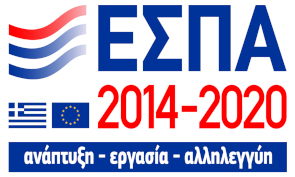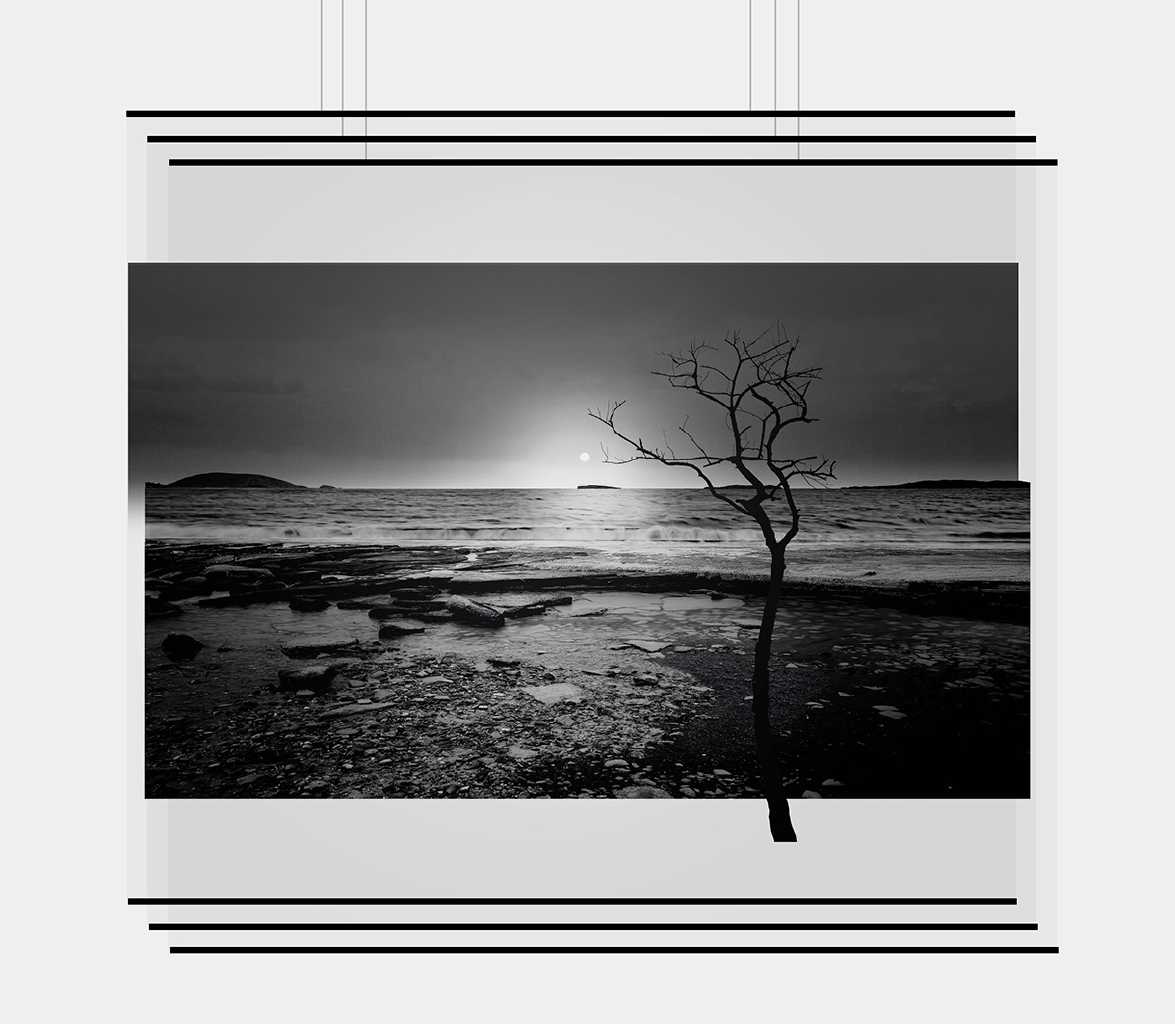
Anabyssos,
photographic prints,
105 x 95 cm,
2021
The title seems to be contradictory, signifying to begin with an extent in space and time, ‘after’ the end of the things that are defined by and of themselves. In reality, however, there is no contradiction, as in the specific unit which Takis Zerdevas is exhibiting by means of his works, sensation co-exists with meta-sensation in a fluid, unstable state which is constantly being re-defined and which confirms itself in iconographic terms, but cancels out the static quality of its perspective, as well as its ‘supersubstantial’ realism, as it is always dependent upon the position and different stance of observation on each occasion of the beholder.

Andros,
photographic prints,
105 x 95 cm,
2023
The characteristic feature which permeates the whole creative career of this artist – who is without doubt a leading one – is that although he knows as few others do the modern means of expression in the field which he serves, he uses – with an inner economy of composition – only those which are absolutely necessary.

Beach,
photographic prints,
105 x 95 cm,
2024
Sparing, laconic, concisely abstractive, Takis Zerdevas speaks through the aposiopeses and what is left unsaid in each of his ‘pictures’ – pulsating ‘pictures’ which act as elegies, as they unite momentarily, one could say, the subjects with the derivatives, the ‘proterons’ with the ‘hysterons’, as they are permeated by an active verb’s vigour, but also at the same time by an archetypal reduction, as in the case of an infinitive. Through a harmonious symbiosis and a borderline amalgam of antithetical states, in the works of this talented art photographer, intellectual synizeses with a profoundly elaborated lyricism of a poetic order, which surfaces between sensation and illusion, are at the same time stirred up.
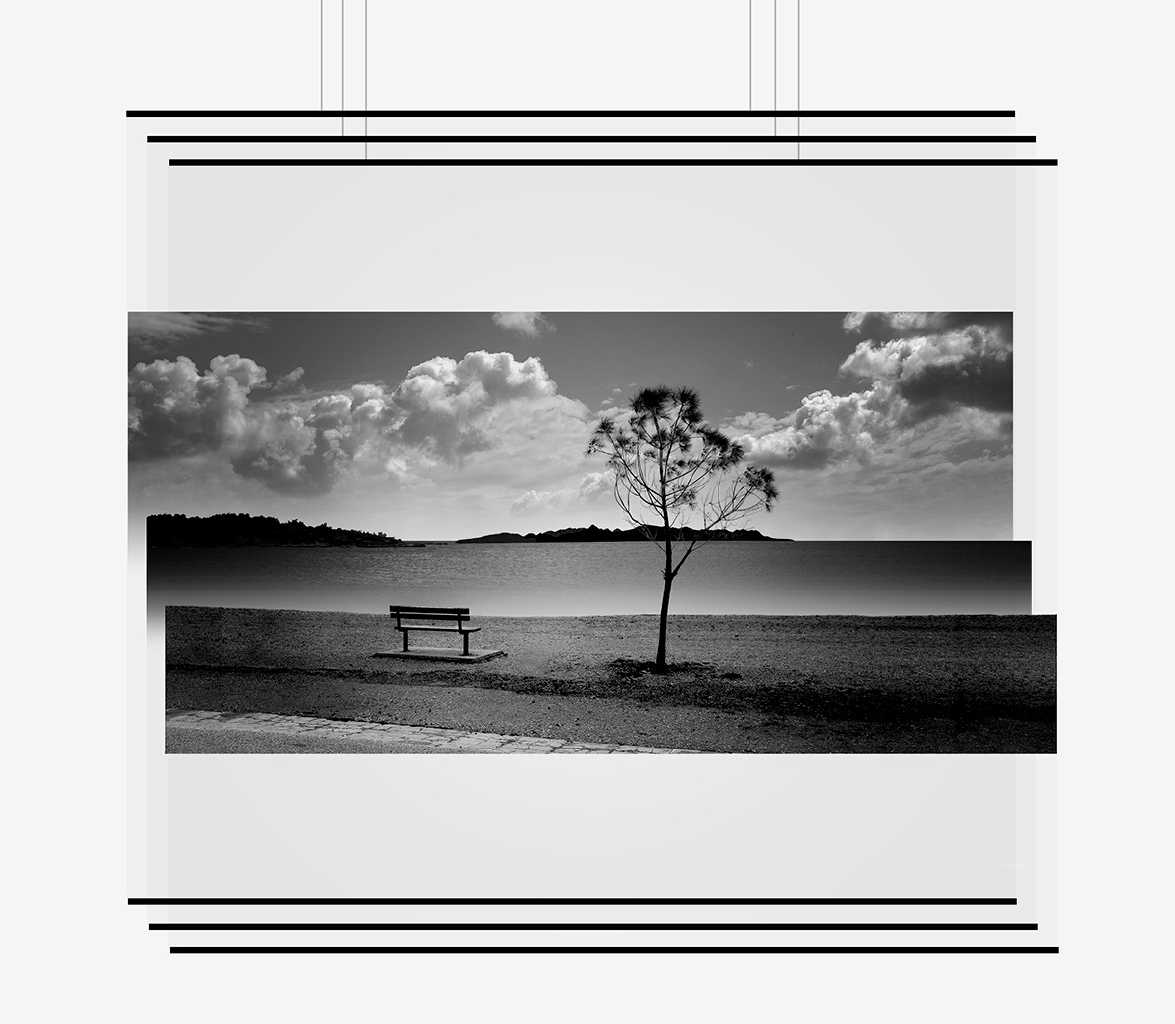
Glyfada,
photographic prints,
105 x 95 cm,
2023
All the questionings and the perplexities which the complex photographs of Takis Zerdevas suavely illuminate are concerned with light - the light which emphasises the horizon, but nevertheless directs the gaze through an intermediacy of stages and terraces (of land). At the same moment and almost impeccably, the gaze advances to the farthest extent of this horizon, as if focusing, innately with what is visible, on a strange ‘beyond’. The three levels of the interactive ‘picture’ in this unit, although they leave apparent the grammar of the language of film which they employ in their construction, are certainly not tied down to the ‘discovery’, as the very meta-sensation surpasses it by means of the identity the visible acquires, as it cancels out anything static of any kind, depending upon the movement or stance of the beholder at any time – the beholder, that is, who in the end becomes an ’accomplice’ in jointly shaping the ‘picture’ which he observes, as that constantly changes and is transformed. It gives birth to him and he brings it to birth in redefining it.
The subject (the viewer) becomes at the same time an object in the field of viewing of each black and white photograph and tonally graduated ‘landscape’, which is lit with reflected light, as the moon is lit by the sun. The same, however, is true vice-versa. Each

Kopais,
photographic prints,
105 x 95 cm,
2019
‘landscape’ also unfolds in narrative terms as a distraction in the rational coherence. It leads to the light and comes from the light. It includes and is included, by a process of reflection, by the beholder, who redesigns each 'landscape’ through his movement and ruminations, as his psychodynamic and intellectual dwelling-place, and also as his expectation unawares, and a likely visual wager of the imagination and the mind in its context – and no less as a fruitful utopia or reality enclosing an enigma and allegory. Each ‘picture’ by Takis Zerdevas, in any event, serves as a visual game of place and manner, time and diachronicity, by way of externalised rhythms and repetitions or recurrences of the scrutiny, with paradoxical dislocations and distancings, re-assemblings and abstractions. His artistic imprint also serves as a chess-board and as a working hypothesis – but at the same time as a line in suspension of some poem with an intuitively semantic interpretation of light through its submerged manifestations. In tracing each of his photo-compositions, we approach it without robbing it of its magic, as it draws us like a magnet, through a series of existential questionings and perplexities which rise up, with subterranean mystique. We also apprehend it – apart from its peerless aesthetics – as a theorem or metaphysical quest, in this spare, philosophically grounded, unit of works, simply, and sometimes ascetically, formulated (but in the absence of what at first sight it reveals), of an artist who is unique of his kind.
Athena Schina Historian of Art and Theory of Culture (University of Athens)
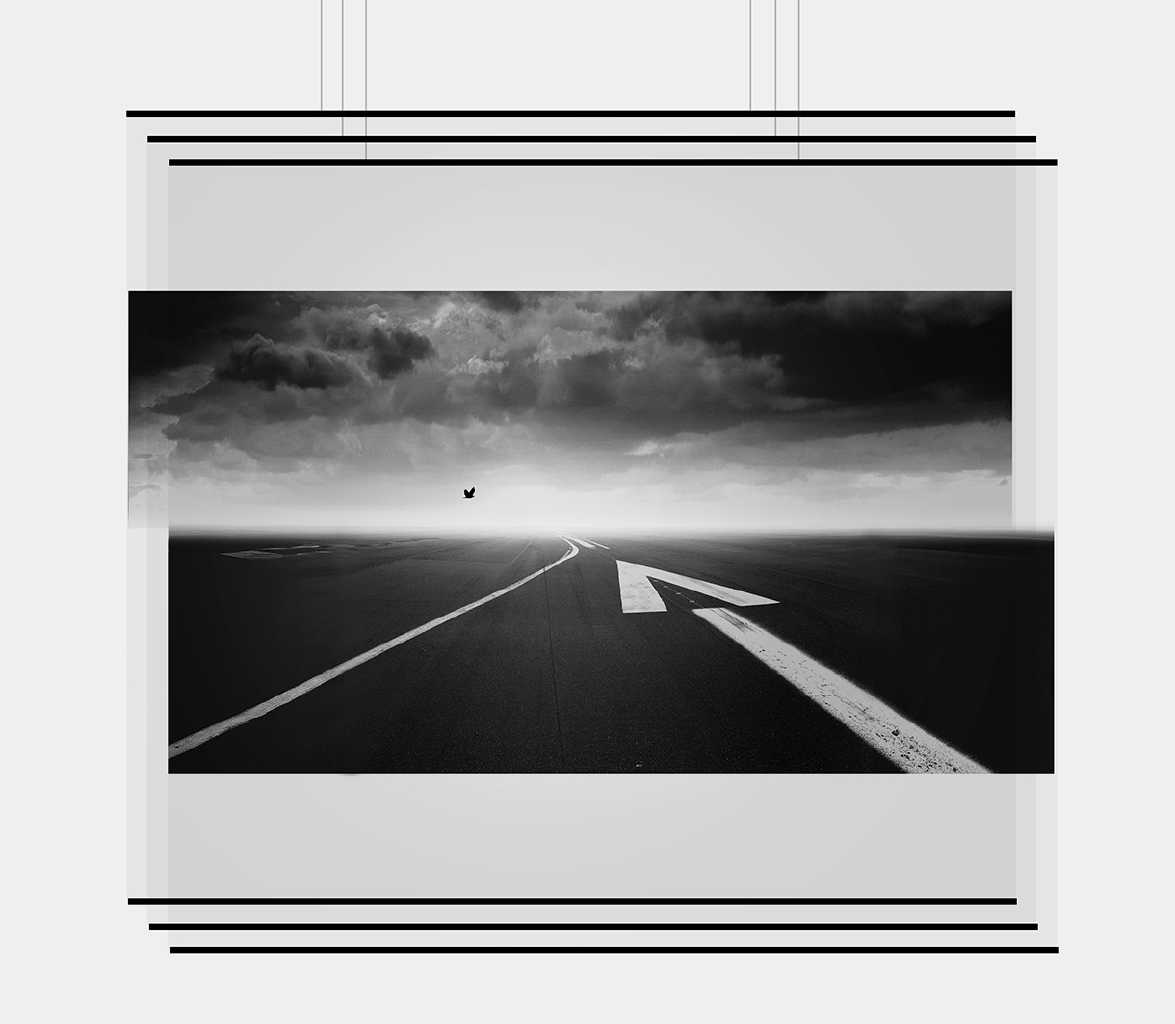
Arrow,
photographic prints,
105 x 95 cm,
2019
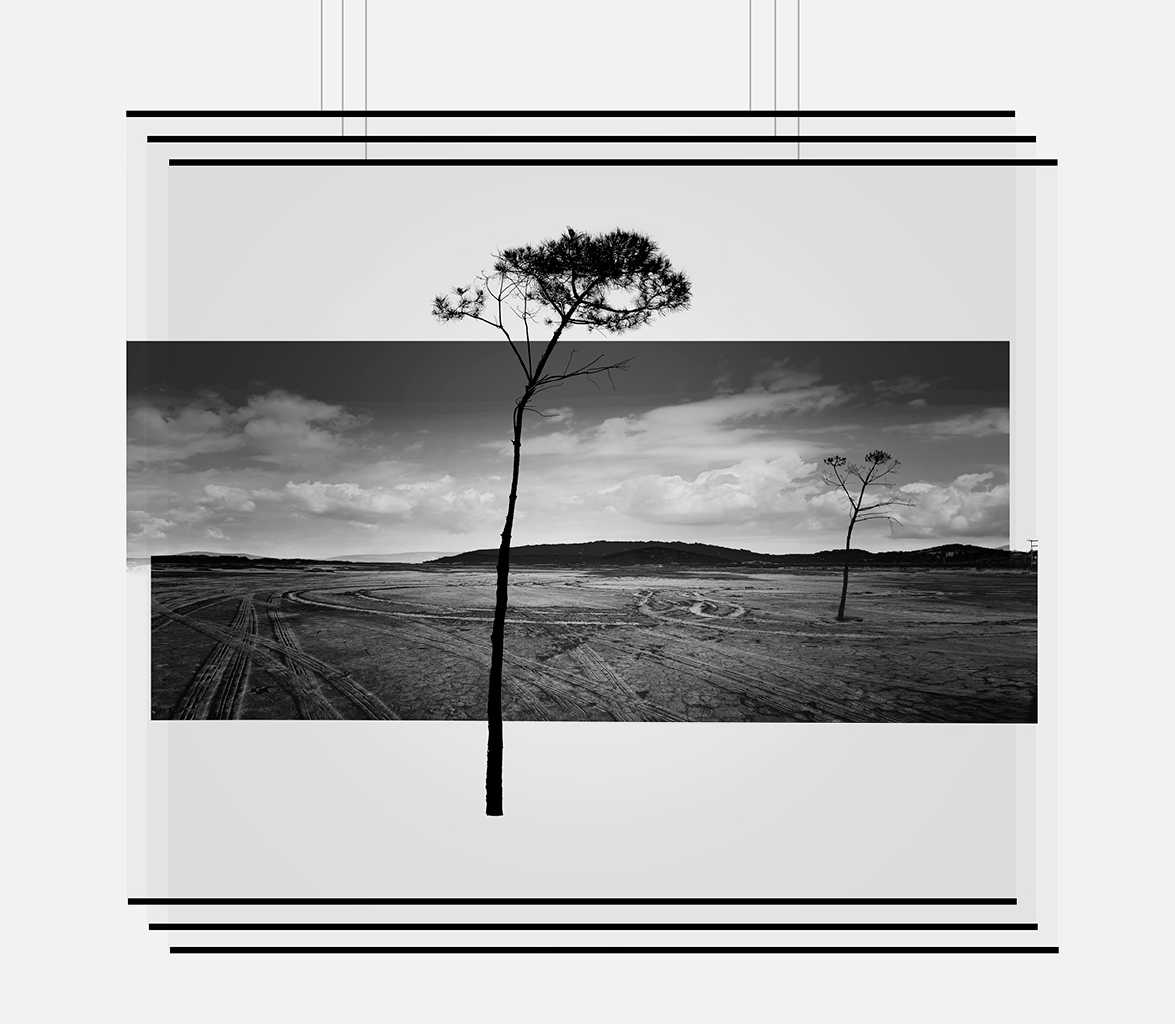
Ermioni 1,
photographic prints,
105 x 95 cm,
2021
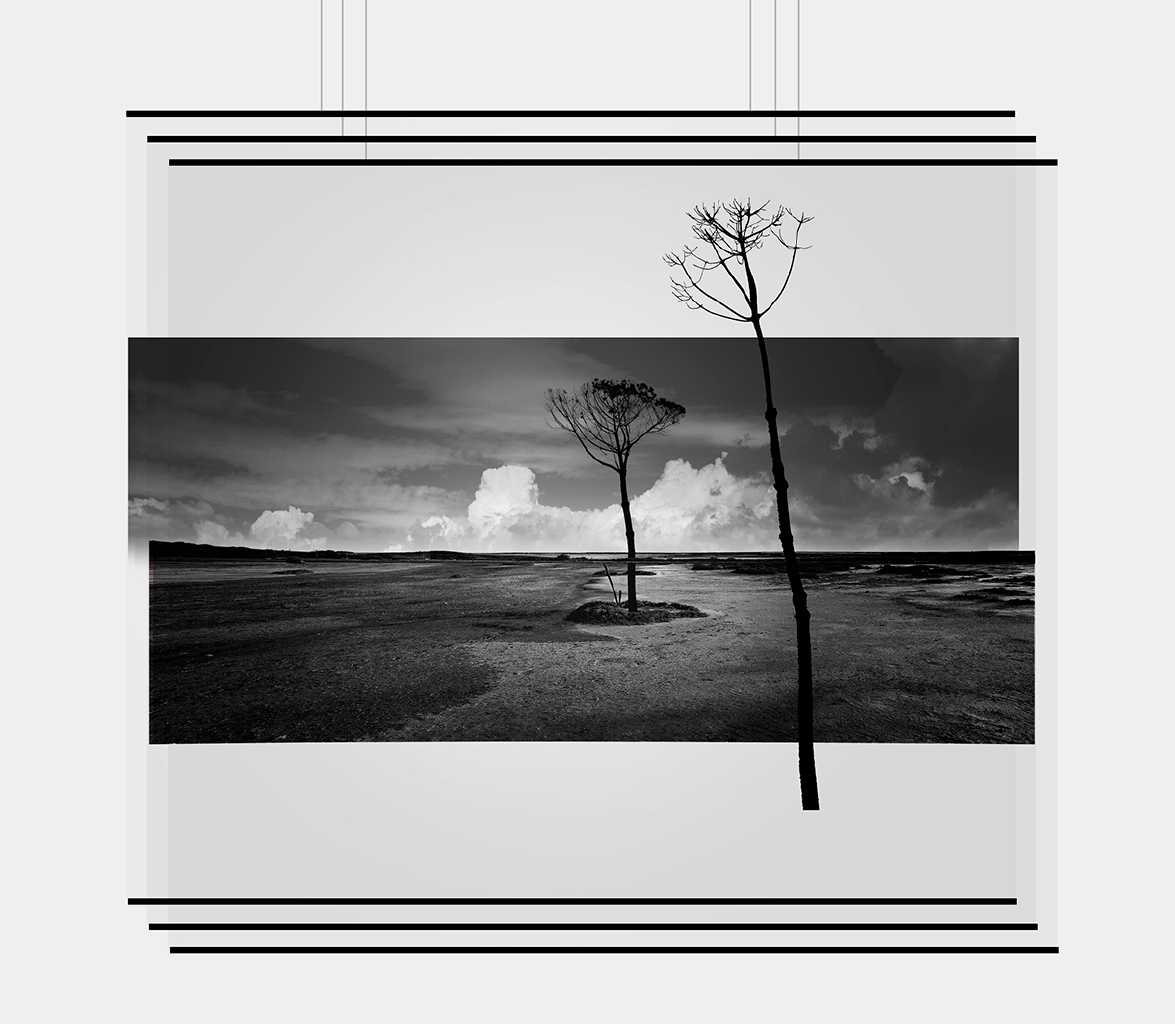
Ermioni 2,
photographic prints,
105 x 95 cm,
2023
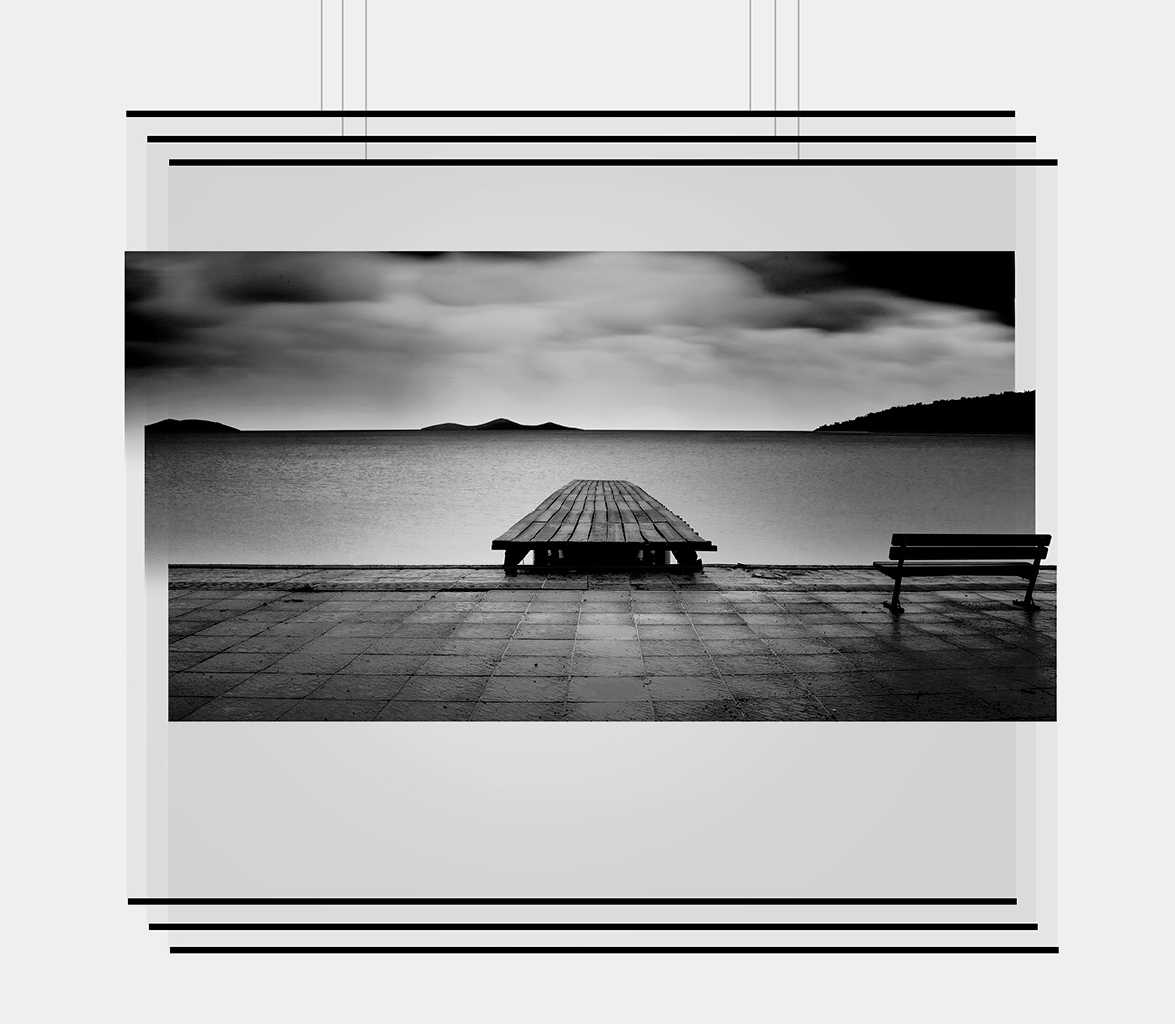
The pier,
photographic prints,
105 x 95 cm,
2020

The field,
photographic prints,
105 x 95 cm,
2022
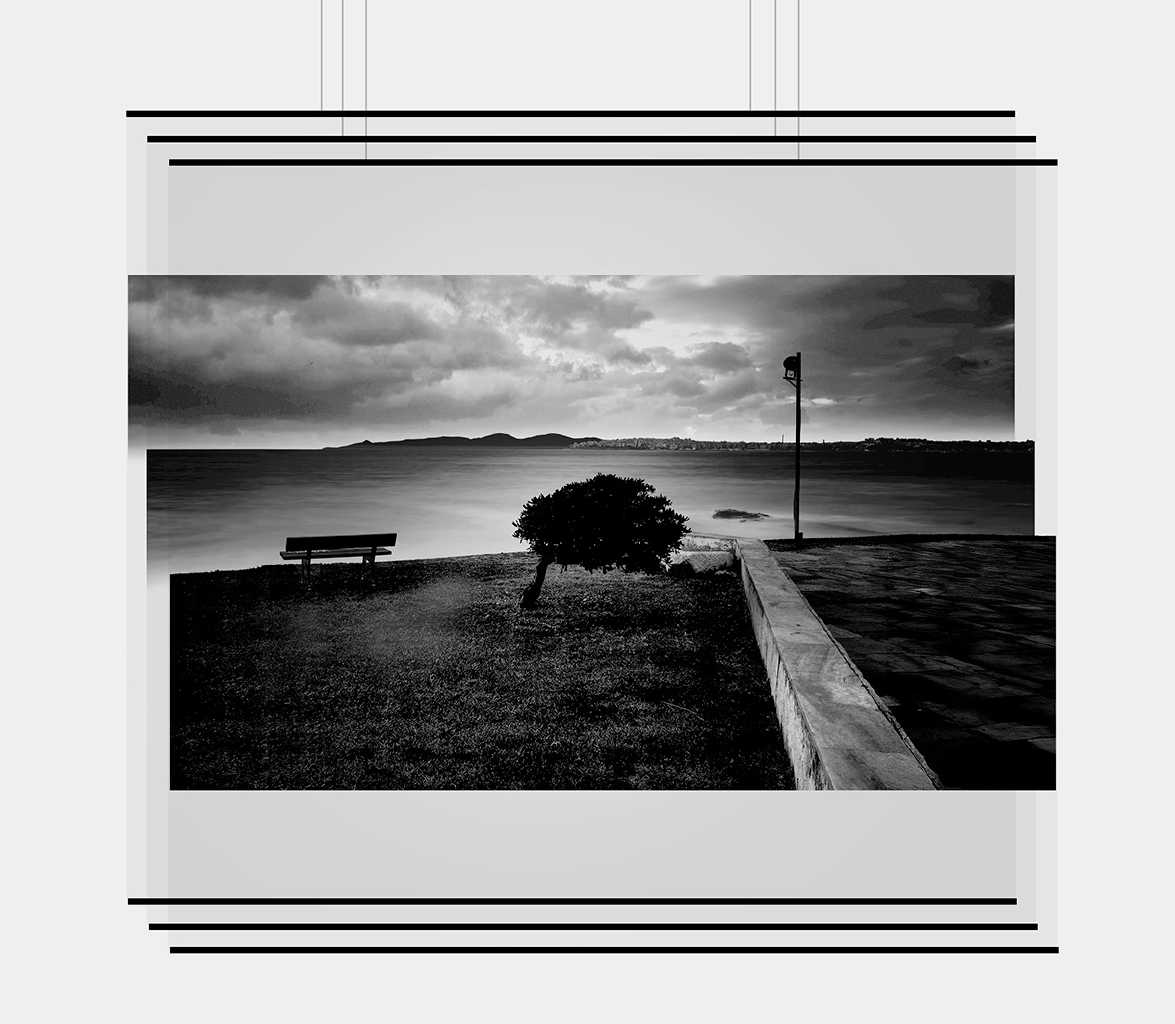
Faliro,
photographic prints,
105 x 95 cm,
2021
